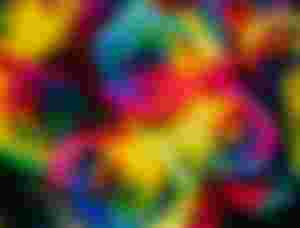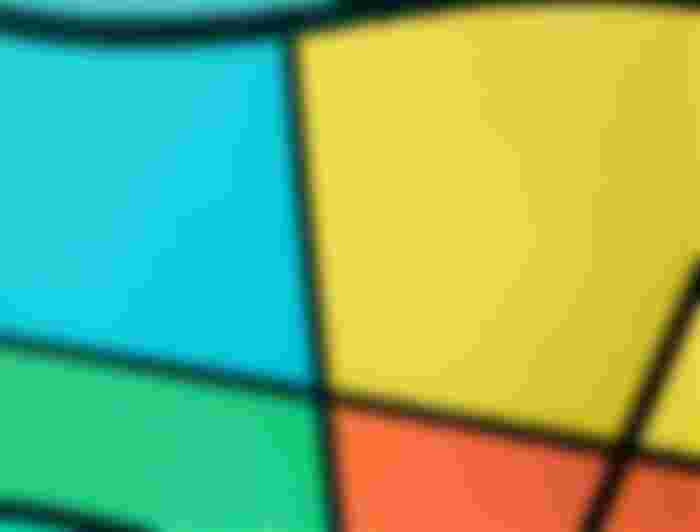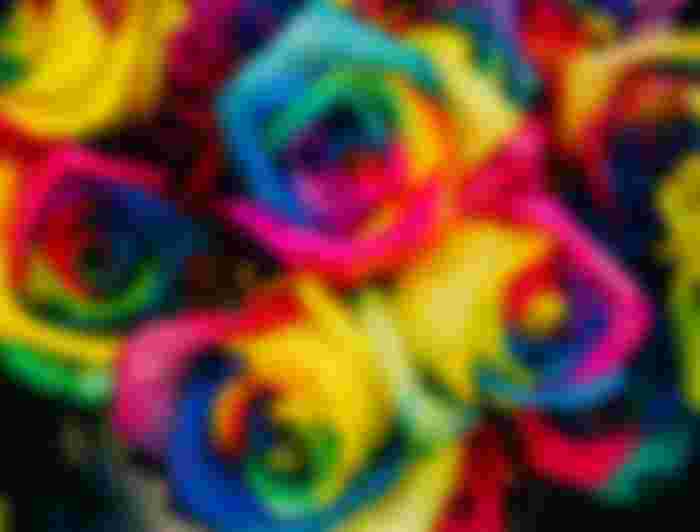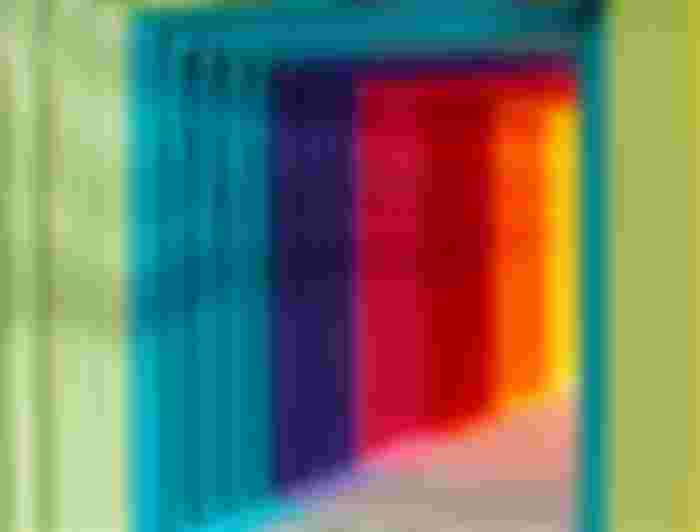The importance of colors in human life appears in all aspects and different areas of life, such as literature, art, social and psychological sciences, materialism, and moral, etc., and the definition of colors varies according to the field in which they are used, so plastic artists, painters, and workers in the fields of dyes and printing defined colors as inks and components. The dye that is used in its production process, as for naturalists, they defined it like the colored rays that result from the process of analyzing light when it is received in the retina of the eye, that is, it is the physiological effect that results from the presence of the colored pigment material or rays and various lights that the eye receives and the process of treating it, and analyzing it in The visual centers of the brain through the nervous system.

Colors and their psychological role
Since ancient times, man has used the colors that were extracted from the extract of some plants in works of art, plastic surgery, monuments, and buildings that, in turn, depict the internal and psychological life of the person, and express his feelings, values, affiliations, and inclinations, which made the colors acquire symbolic connotations of life, death, happiness, mercy, and cruelty. And others, but in the current era, many recent studies have proven that colors have a great influence on human cells.

As each color has a special light wave that has a specific length that differs from one color to another, and each wave has an effect that appears on the nervous system and the psychological state. Between individuals.
Color psychology
Psychological studies of psychologists have proven that colors are not just light waves and vibrations. Rather, it has a great influence that reaches the depths of the human soul. Some of them are positive that express comfort, love, joy, and joy, while negative ones provoke feelings of anxiety, turmoil, sadness, and hate, in addition to their clear effect on mood and health; Where colors have been used for treatment since ancient times and civilizations such as the Pharaohs, India, and China, in addition to both the Greek and Hellenistic civilizations, and recently some non-governmental centers specializing in color therapy have appeared.

Many differences were found in establishing a basic basis for the psychological connotations of color. As some conflicts appeared in the interpretation of the connotations of one color between one period of time and another, in addition to the difference in the psychological effects that colors leave across human civilizations throughout the ages, and many classifications explain the psychological dimension of some colors; some divided the colors in general into four main colors: (red, blue, green, and yellow); Where the blue color expresses the mind, mind, intelligence, wisdom, yellow color expresses emotions, feelings, creativity, confidence, and self-esteem, the red color expresses the physical dimensions, strength, courage and courage, and the green color expresses the interaction and balance between all the previous colors, comfort and renewal, and others Lots of classifications and theories.

Colors and their psychological connotations
Due to the psychological importance of color and its positive psychological effects, its psychological connotations appeared in various areas of life, especially in fields, residences, hospitals, and educational buildings, in addition to the interest of many scientists in conducting scientific studies and research that investigated the connotations of colors and their symbolism, and appeared according to the colors as follows :
White color
It is the color that denotes purity, purity, joy, and peace, and whoever benefits from the psychological characteristics of the white color is the group of doctors, workers, and those in the medical field because it sends feelings of comfort, hope, optimism, and healing in the souls of patients, as it is a bright color that has the property of reflection in all colors and waves The light incident on it, as it has an effective effect in the process of relaxing and calming the nerves. Where it has proven effective in prisons and psychiatric institutions in treating and calming excessive nervous attacks.

Black Color
It is a dark and dark color that does not reflect any colored light wave falling on it; It absorbs all the colors of the spectrum that are directed to it, which lends a state of mystery to the personality of the individual, and the black color in most of its cases suggests melancholy and poses a threat to individuals who fear the dark due to its dark characteristics, and is considered in many countries as a means of mourning and expressing sadness, However, it is beautiful to use it in association with white in all kinds of arts, as it leads to the creation of artistic contradiction that inspires beauty, and some mentioned other connotations of black. Such as sophistication, safety, and competence.

Red color
The red color is the color of fire, blood, and revolution, in addition to being a color that generally indicates emotions and strong feelings, in addition to strength, vitality, activity, and perseverance, and it is also used to express states of anger and danger, as is the case in a traffic light, and it is a color that acts as a catalyst for the breathing process, It raises the heart rate, which is an eye-catching color that calls attention quickly, and it is one of the warmest and warmest colors.

Blue color
It is the color of the sky and the sea, indicating the horizon extended and large, which gives a sense of spaciousness and comfort to the human soul, as it is a calm and transparent color that calls for the ability to create an atmosphere of calm and contemplation, and helps to relax effectively, and it can also indicate wisdom and friendship, and it shares with color White in its expression of peace, love, and harmony, and in general, it is a favorite color for the human soul, it has the effect of calming and relaxing nerves, in addition to that, it automatically reduces the level of blood pressure and the speed of breathing.

Yellow color
It is the color of the sun and gold, and it is warm that expresses the heart of light, but less brightly, and it is a beautiful, attractive and charming color that shows its psychological properties and connotations in resisting neurological collapse diseases, and the yellow color is characterized by its relative wavelength, in addition to being a strong emotional stimulus that has many effects On the human soul, however, these effects vary according to its degrees, as it is at its moderate and comfortable level it helps to generate and support morale, and it also enhances self-confidence and optimism, as for its high levels, which may be annoying and undesirable, the opposite effects may appear to it. Such as arousing feelings of fear, tension, and anxiety.

Green color
The green color is in the middle of the color circle between blue and yellow, this location makes it located between the calmness of the blue color and the heat of the yellow color; Therefore, if it becomes cold and gradually turns blue, its role in summoning tranquility, calmness and wisdom appear, and if it increases heat and moves towards yellow, its effect appears in stimulating vitality and feelings of optimism and warmth, as it is a comfortable color for the eyes that can be easily accessed.

The effect of colors on humans
1. Psychological impact :
White color: suggests calm, and makes the soul feel relaxed and reassured. Black color: It suggests dignity and sobriety, and sometimes we feel a sense of prestige and fear when we see it.
Green color: suggests hope and life, as it relaxes the soul and improves its mood, in addition to a sense of joy when it is located among the trees and green areas.
Red color: one of the exciting colors that suggests activity and vitality, and some consider it a symbol of love.

Yellow color: It attracts attention and increases the chance of remembering the things associated with yellow, as it is considered a tonic agent for memory, and it is a color that suggests happiness and pleasure.
Orange color: It suggests activity and enthusiasm, and usually the people who prefer this color are characterized by creativity and a fun spirit.

2. The curative effect :
White color: White light is used in the treatment of yolk that affects newborns, and wearing white clothes with exposure to the sun helps in treating tuberculosis.
Green color: It helps relieve the pain of cancer patients, and some other organic pain, and improves the difficult psychological conditions that some people go through, especially if the exposure is to see the green color through the spacious green gardens.

Yellow color: It helps in building and regenerating the cells of some organs in the body, such as the spleen and pancreas, improves mood, and increases the ability of the brain to remember.
Red color: increases the sexual ability, as it activates the body and irritates the sexual organs, which increases the sexual desire of the person.
Orange color: It is a tonic and tonic for the nervous and digestive system, and it is also used in the treatment of eye infections.












